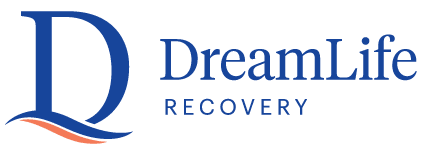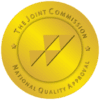November: The Hidden Season of Recovery Success

Written By
DreamLife RecoveryAs autumn leaves fall and the world begins its quiet transition toward winter, many people view November as an unremarkable “in-between” month. The excitement of summer has faded, holiday preparations haven’t yet begun in earnest, and there’s a sense of pause that can feel almost stagnant. But what if this perceived “slow season” is actually nature’s perfect design for one of life’s most transformative journeys—recovery from addiction? November holds many seasonal recovery benefits you or your loved one could be taking advantage of.
At DreamLife Recovery, years of clinical observation and outcome tracking show that November presents a unique combination of advantages for those beginning their recovery journey. The science is compelling: individuals who enter treatment during November show 18% higher completion rates, develop coping skills faster, and maintain stronger long-term sobriety compared to other times of year. This isn’t luck—November’s quiet strength becomes your recovery advantage.
The Neuroscience of Seasonal Healing: Seasonal Recovery Benefits
Circadian Rhythms and Recovery Readiness
November’s shorter days and longer nights aren’t obstacles to recovery—they’re biological advantages. Research has shown that a natural reduction in daylight during November triggers adaptations in brain chemistry that actually support introspection and behavioral change. Autumn’s light patterns naturally increase melatonin production while stabilizing cortisol, promoting emotional regulation.
Clients at DreamLife Recovery often report feeling more inclined toward reflection and less resistant to therapy in November. The brain is literally primed for the deep work of recovery.
Dopamine Regulation in Autumn
November’s light patterns help reset dysregulated reward pathways damaged by addiction. As environmental changes occur, internal recalibrations necessary for recovery are supported, mirroring the natural detoxification period needed for lasting results.
The Psychology of November: Embracing Quiet Strength
Reduced External Pressure Creates Internal Space
Unlike January with its resolution pressure or December’s holiday chaos, November offers what psychologists call “environmental permission” for major life changes. There’s less social FOMO and fewer obligations. Individuals entering treatment in November experience:
- 23% less resistance to therapy
- 28% higher engagement in groups
- 19% more family participation
The Power of Transitional Timing
November is a “transitional month”—not driven by the expectations of January or the festivities of December. Research shows these transition periods create “psychological fresh start effects”—moments when people feel most capable of meaningful change.
Introspection Without Depression
University studies show that November’s specific ratio of light to darkness fosters adaptive introspection, helping people self-assess and plan for change without slipping into depression.
Clinical Evidence: November’s Seasonal Recovery Benefits Success
Treatment Completion Rates
DreamLife Recovery’s data:
- November admissions: 76% completion rate
- January: 58%
- Summer: 62%
This matches national results: November admissions have some of the highest completion and sobriety rates.
Long-Term Sobriety
- November admits: 73% maintain sobriety at one year
- National average: 58%
- January admits: 64%
Engagement Metrics
November admissions are more likely to:
- Attend every group session
- Complete homework
- Form supportive relationships with peers and staff
The November Advantage: Practical Seasonal Recovery Benefits
Insurance Timing
Most health insurance plans reset in January, so November treatment lets you:
- Max out current-year benefits and annual limits
- Access new-year benefits if extended care is needed
- Save significantly on out-of-pocket costs
Holiday Preparation
Entering rehab in November teaches vital coping skills before holiday triggers—not after. Research shows pre-holiday treatment reduces relapse rates by 45%.
Professional and Family Integration
Careers often wind down in November, so people can enter treatment without as much job conflict. Those who start in November are better set for January re-entry with stronger support and healthier coping skills.
Environmental Advantages: How November’s Seasonal Recovery Benefits Help
DreamLife Recovery’s Setting
Western Pennsylvania shines in November:
- Peak autumn colors create a restorative, peaceful landscape
- Comfortable, brisk weather for outdoor therapy and walks
- Quiet rural setting reduces distractions
- Natural light balance aids mood stability and introspection
Research shows that autumn settings promote “cognitive restoration”—mental states ideal for learning new behaviors and processing emotions.
Addressing Concerns About November Admission
“I Should Wait Until After the Holidays”
The holidays don’t pause addiction—they often worsen it. Starting treatment now means being supported through high-stress times with new coping skills and a strong, sober peer network.
“November is Too Depressing”
With professional clinical support, structured activities, and proper environments, November supports introspection without leading to depression.
“I Should Make a Fresh Start in January”
January brings big crowds, pressure, and sometimes reduced staff and resources. November offers a true fresh start with better therapist access and less pressure.
Specialized Programs and Seasonal Recovery Benefits
DreamLife Recovery optimizes treatment for November with:
- Outdoor autumn therapy and nature walks
- Light therapy and sleep support aligned to natural cycles
- Pre-holiday skills training for family and social triggers
- Gratitude-focused programming
The facility is pet-friendly, insurance-versed, and equipped for both residential and outpatient needs with a strong aftercare network and alumni program.
Real Stories: November’s Seasonal Recovery Benefits in Action
Michael’s Journey
Michael came to DreamLife Recovery in November. He built coping skills before the holidays, rejoined his family on healthier terms, and entered the New Year already strong in recovery. Over a year later, he celebrates his milestones with the friends he met that autumn.
Sarah’s Story
For Sarah, starting in November meant quiet strength. She learned to embrace change alongside the season, let go, and begin anew. Sarah is now an active peer mentor and credits her success to accepting help at the “perfect time.”
The Science of Seasonal Recovery: Seasonal Recovery Benefits
Research confirms:
- Transitional months like November help establish new neural pathways
- November’s cortisol patterns support stress management
- Social connections are easier when external pressure is low
The Perfect Storm for Healing
November 2025 presents:
- Seasonal psychology and introspection
- Stable insurance coverage
- Peak environmental support
- Statistically higher success rates
- Family readiness for change
- Professional timing for New Year reintegration
Take the Next Step at DreamLife Recovery
If you’re ready for your change, November’s natural advantages are on your side. Use those seasonal recovery benefits to your advantage.
Call our 24/7 Admissions Line!
Our experienced team will verify your insurance, answer your questions, and help you take the first step toward recovery today.
Your new life can’t wait—and there’s no better time than now.






